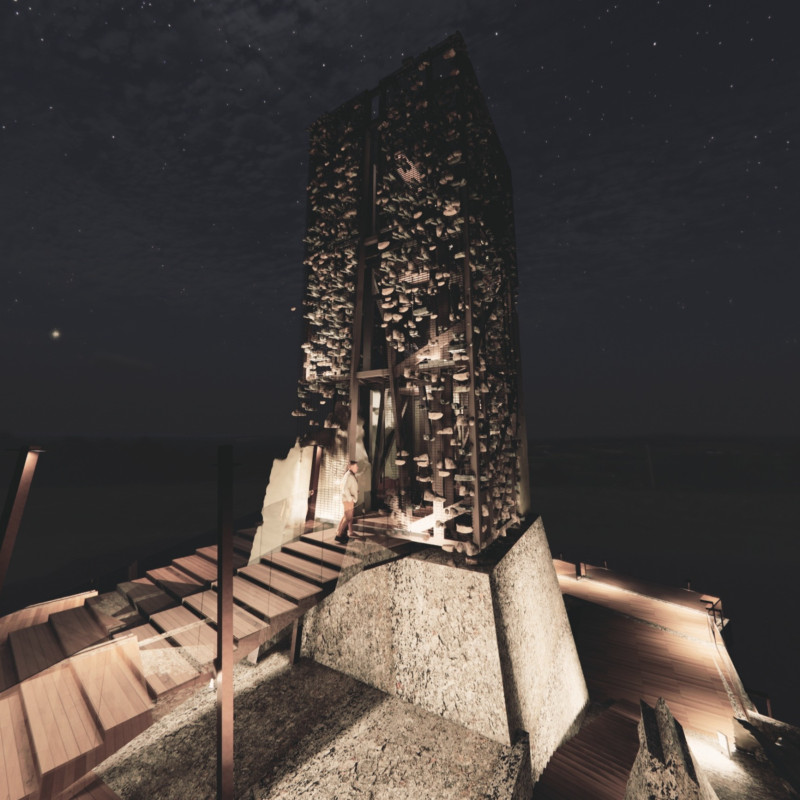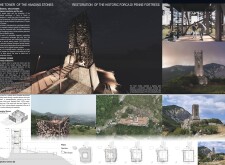5 key facts about this project
## Project Overview
The Tower of the Hanging Stones focuses on restoring the medieval watchtower known as Forca di Penne, situated in Capestrano, Italy. This site, historically significant for its oversight of vital pathways, offers expansive views of the mountainous landscape and the adjacent sea. The intent of the project is to revitalize both the physical structure and its historical narrative, bridging the past with contemporary architectural practices.
### Material Integration and Historical Context
The material selection is pivotal to the design approach, where a combination of traditional and modern materials is employed to create a cohesive aesthetic. Steel is utilized for the structural framework, providing durability and modernity, while glass elements facilitate unobstructed views, enhancing the experience of the surrounding scenery. Local stone reflects the region's historical building techniques, grounding the design in its geographic context. Additionally, wooden elements are integrated for warmth, and concrete provides foundational stability, ensuring long-term sustainability and structural integrity. This deliberate choice of materials fosters a dialogue between the historical significance of the watchtower and its contemporary reinterpretation.
### Community Engagement and Functionality
The design incorporates features that enhance the relationship between the structure and the surrounding community. A rooftop observation platform transforms the tower's apex into a viewpoint, enabling users to appreciate its historical significance as a lookout point. The interior space is designed for multifunctional use, accommodating gatherings, educational programs, and exhibitions to activate the site as a cultural center. Furthermore, strategic lighting creates a notable ambiance during nighttime, allowing the structure to serve as both a historical landmark and a contemporary attraction. An important design motif, the “Hanging Stones,” reflects the geological features of the area, symbolically linking the tower to its environment and enhancing its cultural relevance.
This project exemplifies a thoughtful balance between restoration and innovation, emphasizing sustainability and community interaction while respecting the historical roots of the tower.



















































